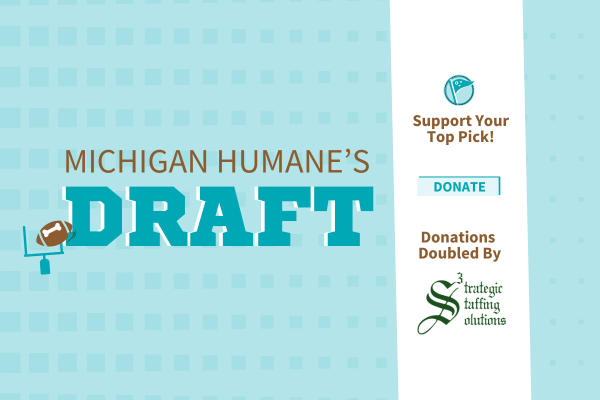[youtube https://www.youtube.com/watch?v=FJz6wEHEtWA]
Check out these awesome microchip success stories!
Each year, the Michigan Humane Society shelters and cares for approximately 10,000 stray animals. Tragically, only a small percentage of lost dogs (16%) and cats (3%) are ever reunited with their owners. Why? Because the majority of these animals lack any form of identification. While it is estimated that about one-third of pets will get lost at some point in their lives, the good news is that losing a pet forever is largely preventable!
HomeAgain, the microchip company used by MHS, reunites 10,000 pets with their owners every month across the country.
Dog and cat microchipping is a simple procedure. A veterinarian simply injects a microchip, about the size of a grain of rice, beneath the surface of your pet’s skin between the shoulder blades.
A microchip is a permanent form of pet ID. The microchip itself has no internal energy source, so it will last the life of your pet. It is read by passing a microchip scanner over the pet’s shoulder blades. The scanner emits a low radio frequency that provides the power necessary to transmit the microchip’s unique ID code and positively identify the pet.
MHS uses HomeAgain microchips, which are ISO compatible. That means they can be read in many other countries besides the United States. HomeAgain is also the only microchipping product with the Bio-Bond patented anti-migration feature that helps ensure your pet’s microchip will stay in place and can be easily located and scanned.
MHS strongly recommends that all dogs and cats be implanted with a microchip in addition to wearing a collar and I.D. tags. Keeping your contact information up-to-date is critical in helping a lost pet get back home. This will help to make sure your pet will be as lucky as Petie if he or she ever goes missing.

